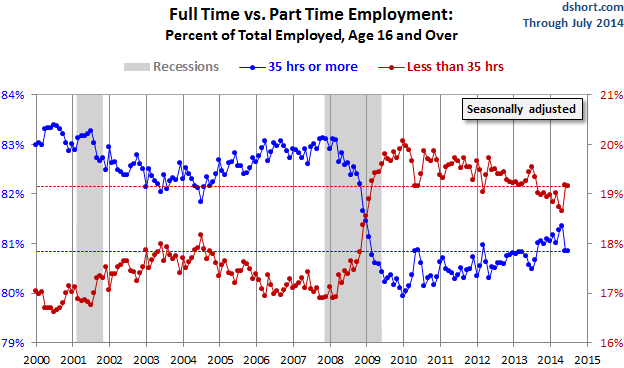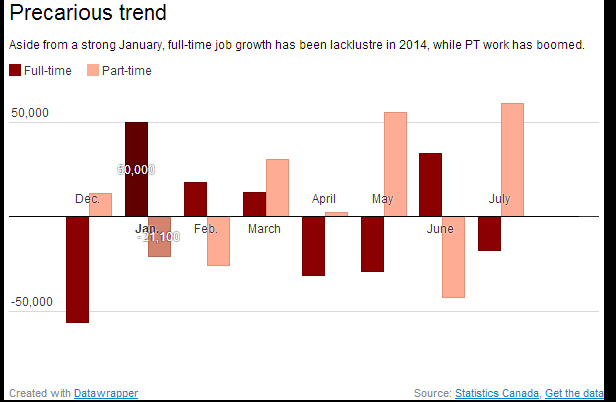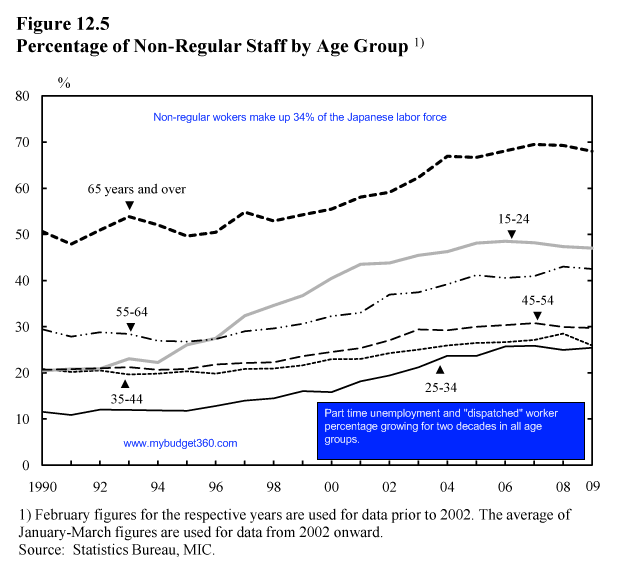The trend for part-time work sweeping the world: Part-time work dominating jobs in the United States, Canada, and Japan.
- 0 Comments
The employment statistics do a good job concealing the true nature of the workforce. The unemployment rate has dropped dramatically since the recession ended largely because millions of Americans are now no longer considered part of the workforce. This is an easy way to boost the employment rate without actually creating new jobs. Another trend that seems to be growing around the world is that of part-time work. Part-time work and low wage labor go hand and hand. Part-time workers usually are not afforded the same benefits as those working full-time. They are also brought on with a just in time attitude and are treated as such when no longer needed. Part-time work has been growing before the recession and continues to do so today. In Canada, part-time work has been the dominant sector of employment growth. Low wage labor and part-time work go together like peas in a pod. Is this a trend we should be concerned about?
The growth of part-time work
Companies looking to cut benefits and offer little commitment to future workers will opt to go the part-time route. It is embedded in the nature of low wage labor. This is one major reason how companies have been able to boost profits while filtering profits to the top: slash wages, cut benefits, and squeeze productivity out of workers. It is a good model at the top and simply does not foster a middle class. Why would anyone struggling with part-time work want to commit to buying a home? Long-term purchases are pushed off into the future and big money has stepped in to make those purchases since they have access to funding sources like the Fed with an unlimited window.
The growth in part-time work in the United States is unmistakable:
We are still having a tough time getting back to full-time employment even after the current recovery. However, you can see that the percentage of our workforce now working part-time is near record highs.
This trend is not only happening in the US but also in Canada:
Source: Global News
“(Global News) Since the start of the year, part-time work has been growing at clip of 13,000 positions a month, StatsCan data shows, a period in which full time has actually declined, Capital Economics says.
Eighteen thousand full-time jobs were lost last month—well down from what StatsCan’s first reading reported, which was just shy of 60,000. But that’s not exactly something to cheer about.
“The breakdown still shows that Canada is becoming a nation of part-time workers,†Madani said.â€
Most of Canada’s employment growth for 2014 has come in the form of part-time work. This is part of the lower wage segment of society. Digging deeper into Canada’s details we also find a large portion is being driven by their housing bubble. As home sales drop and construction slows down, what do you think is going to unfold? Canada is setting itself for a correction similar to what the US faced in 2007. Of course, many will doubt the parallels but it is clear: over leverage in housing, absurd prices, and too much of the economy reliant on one sector.
Japan has led the way with the part-time worker trend:
Since the Nikkei and housing bubble popped in Japan over two decades ago, the government and banks have decided to quantitatively ease their way into prosperity. What this has caused is stagnant GDP growth, zombie banks, and a slow erosion of prosperity for working Japanese. With such a large workforce only working part-time, you have other societal issues like people choosing not to start families or the inability to purchase homes. The older generation will attribute this to laziness but the reality is the economic conditions simply make it harder for the young workers of the world.
Part-time employment growth seems to go hand and hand with low wage work. This trend is clearly getting stronger. This movement also sets up a situation where the middle class has a tougher time of expanding. If you think of the middle class in the US part of the characteristics that come to mind include: stable work, good pay, benefits, and stability. All of those factors are missing in the current flood of jobs coming online.
If you enjoyed this post click here to subscribe to a complete feed and stay up to date with today’s challenging market!



 If you enjoyed this post click here to subscribe to a complete feed and stay up to date with today’s challenging market!     Â
If you enjoyed this post click here to subscribe to a complete feed and stay up to date with today’s challenging market!     Â